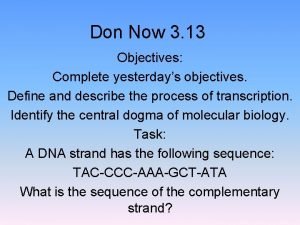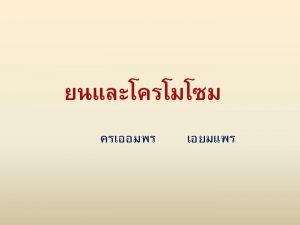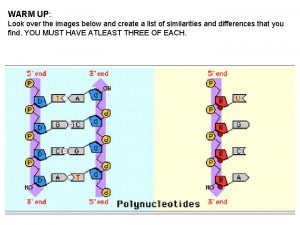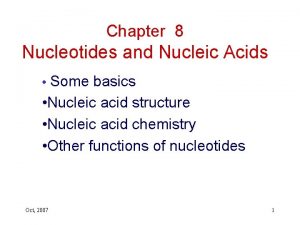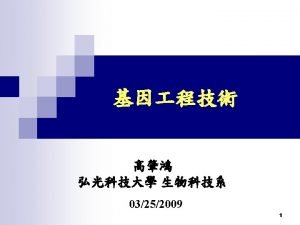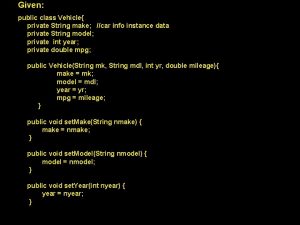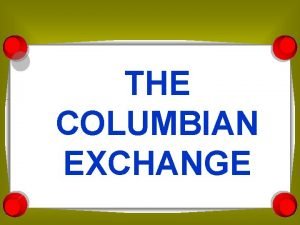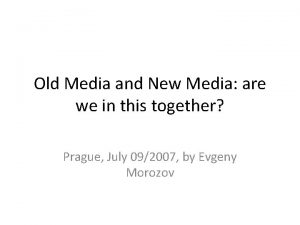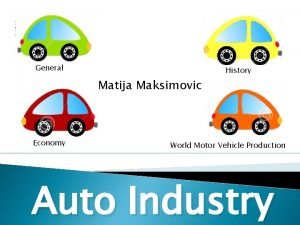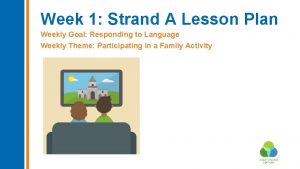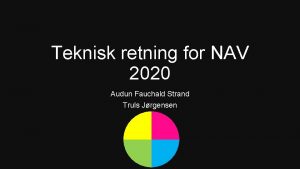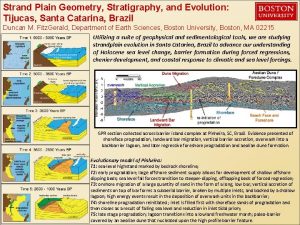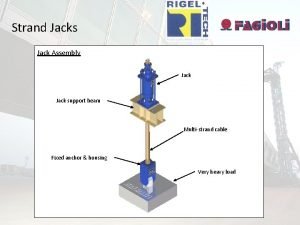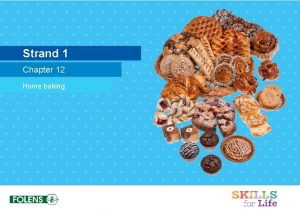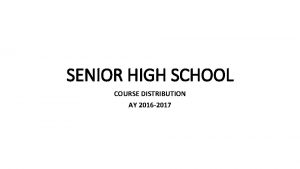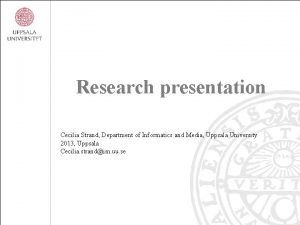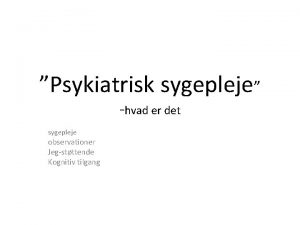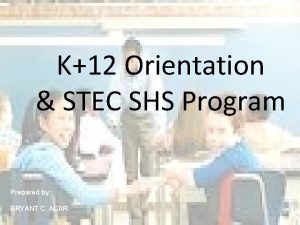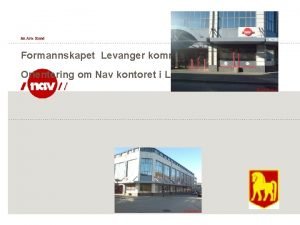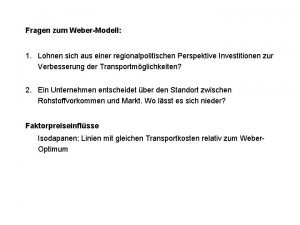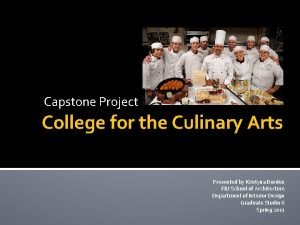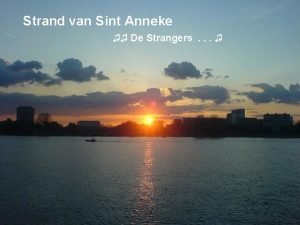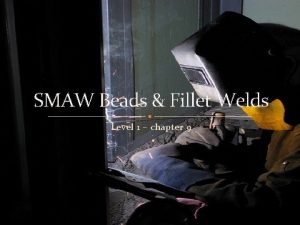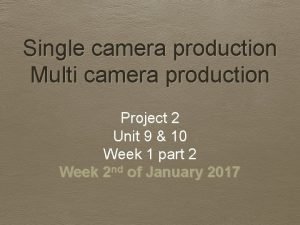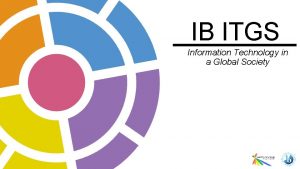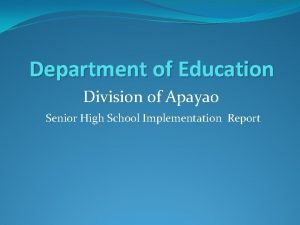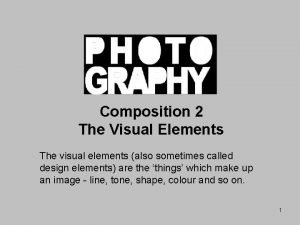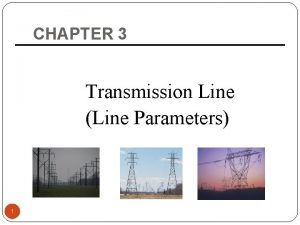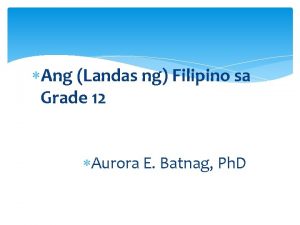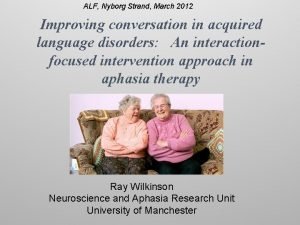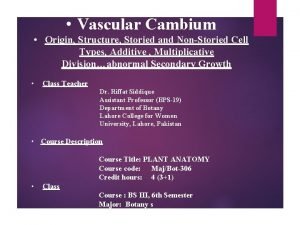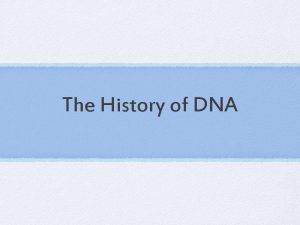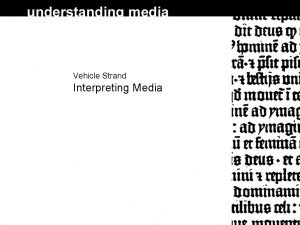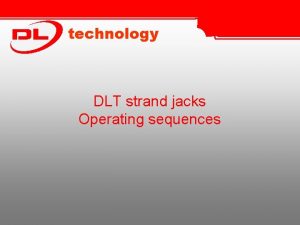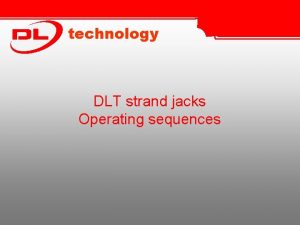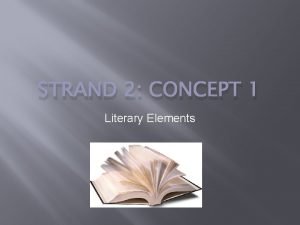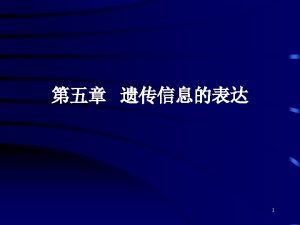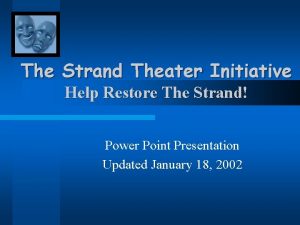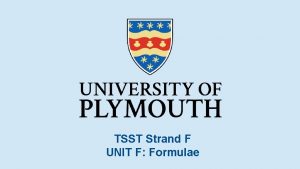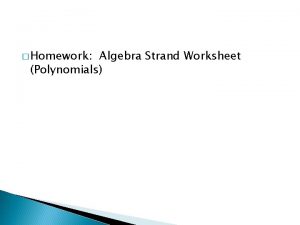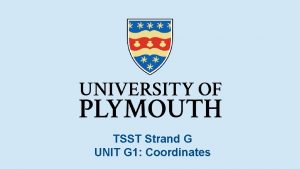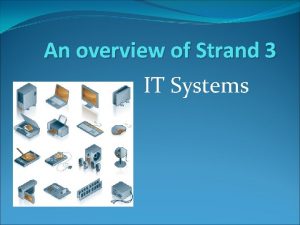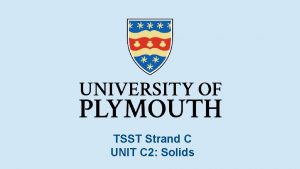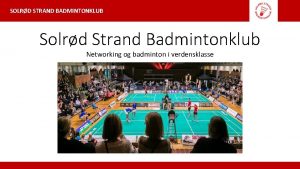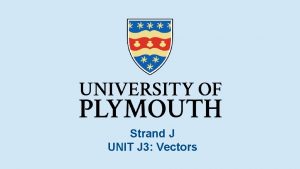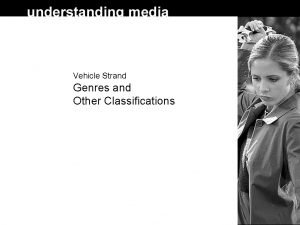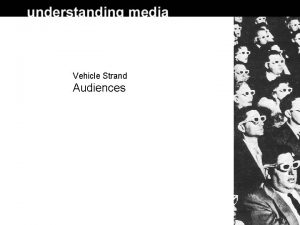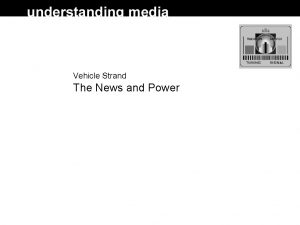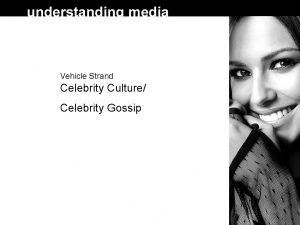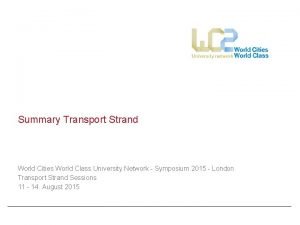Vehicle Strand New Media in a New World












































- Slides: 44

Vehicle Strand ‘New Media’ in a ‘New World’

New Media, New World B&S: history of ‘new’ media; Mc. Luhan; Williams; users, prosumers and UCG; the ‘long tail’; digital copies and information enclosure; technology and the environment. today = media study; generative values; Direct-to-Fan marketing. Key terms: socialisation, communication, copyright; commoditisation; crowd funding.

New Media, New Theory? Mc. Luhan: Global Village and digital natives; technological determinism; extensions and environments; Discarnate Man. Raymond Williams: media re-mediation; media as rooted in and part of social practices and processes.

New Media, New Theory? Clay Shirky: social networking as the fourth great advance in communication. Sherry Turkle: “always on always you” technology threatens to undermine basic human activity needed to survive. Kevin Kelly: analogue reproductions vs. digital copies; generative values.

Society, communication and technology ♦When technology is taken for granted society starts to use it innovatively ♦How it is used – not what it is ♦Innovation can happen anywhere ♦Society can challenge dominant ideology Internet – a revolutionary expression of social capability.

Society, communication and technology Four phases of communication: Print Telegraph; telephone Recorded and broadcast media Internet All forms of media migrate to the internet when it becomes digital

Society, communication and technology Clay Shirky, TED talks June 2009 http: //www. ted. com/talks/clay_shirky_how_cellphones_tw itter_facebook_can_make_history. html

Society, communication and technology Media for groups Media for individual conversations Media for both? Social media as ancient forms of communication

Society, communication and technology Media for education E. g. TED talks, massive open online courses (moocs). Web 2. 0 thinkers Free and open access to information and education Are there any issues with open access of information/data?

Society, communication and technology Sherry Turkle (2014): “We are still in romance with these technologies…We are like young lovers who are afraid that talking about it will spoil it. ”

Society, communication and technology Sherry Turkle (2012) Alone together… People find it harder to be alone Boredom, anxiety and loneliness Technology is used to fill a void

Society, communication and technology Three gratifying fantasies: We can put our attention wherever we want it to be. We will always be heard. We will never have to be alone.

Society, communication and technology Issues of human development: Solitude enables a dialogue with the self Cultivation of an autonomous self Ability to negotiate complexities of real life relationships Lack of empathy

Society, communication and technology “We’re lonely but we’re afraid of intimacy” http: //www. ted. com/talks/sherry_turkle_a lone_together#t-807113

The internet is a copy machine Analogue: Reproduction An inferior likeness of an original Expensive Digital: Identical copies or duplication Infinite number of copies Free or cheap Peer to peer (P 2 P) file sharing e. g. Napster, Gnutella, Bit. Torrent

The internet is a copy machine Issues: Privacy Copyright Value of product - profit Economy, wealth production and power Kelly’s (2008) eight generative values:

Eight generative values: Immediacy Personalisation Interpretation Authenticity Accessibility Embodiment Patronage Findability For example…

Marillion: Barely a week passes by without a musician making the headlines on the back of a crowdfunding success or failure. But before the internet was an ever-present in most of our lives, one band managed to see where it was all going. . . Jack Preston (2014) http: //www. virgin. com/music/how-marillion-pioneeredcrowdfunding-in-music

Marillion: 1997: Fan-funded tour 2001: Anoraknophobia 2004: Marbles

Crowdfunding The practice of funding a project or venture by raising many small amounts of money from a large number of people, typically via the Internet: Musicians, filmmakers, artists, charities etc. Source: Oxford Dictionary

Direct to fan marketing: Immediacy: pre-release products Personalisation: inclusion of fans in product creation Authenticity: signed products Patronage: fan affiliation and appreciation Findability: access to unreleased material

Amanda Palmer: The art of asking Kickstarter campaign: raised $1. 2 million 24, 883 backers funding period: April 30 2012 – May 31 2012 Ted Talks, February 2013 http: //www. ted. com/talks/amanda_palmer_the_ art_of_asking. html

Amanda Palmer: The art of asking since i'm now without a giant label to front the gazillions of dollars that it always takes to manufacture and promote a record this big, i'm coming to you to gather funds so that i have the capital to put it out with a huge fucking bang. i think kickstarter and other crowdfunding platforms like this are the BEST way to put out music right now - no label, no rules, no fuss, no muss. just us, the music, and the art. i'm also making sure EVERY PRODUCT sold through this kickstarter is unique to this campaign, to reward all of you who KNEW ME WHEN and were willing to support me from Day One.

New Media, representation and genre Gender representation and technology; e. g. the tech geek; Stuff magazine; Gamergate. Representation of society e. g. marginalised groups; individual evaluations; charities; arts organisations; protest groups. Re-classification of media texts; e. g. Flickr, Instagram, Pinterest.

New Media, audiences, ideology and power Audiences: interactivity e. g. networking, user-generated content, prosumer and pro -user. Ideology and power e. g. commercial structures that attempt to shape audience power for profit, not shared public interest. Case study?

Environment Strand Light-through/Light-on

Light-through/Light-on The “mosaic procedure, which I try to follow throughout, waits for light through the situation…It does not primarily try to play light on the situation. ” Mc. Luhan (1960, p. 11) How is light transmitted?

Light-on “Most scholars use their knowledge as a flashlight – not to illuminate the world but to shine back into their own bedazzled eyes. ” Mc. Luhan (1977) Projection of light onto the world e. g. a torch or light from a light bulb For example. . .

Cinema A series of images played in quick succession e. g. kinetoscopes Projection of light onto a screen So, it operates via light in transit.

Cinema Complete audience experience Audience distanced from the screen No possibility of changing the film activity – the illusion of motion Passive engagement Hot media

Light-through “Illuminations project themselves at the viewer” Carpenter & Mc. Luhan (1960 p. x) Light falling through media e. g. a window to illuminate a room e. g. the light bulb itself, as light shines through the glass

Television “As with TV, the viewer is the screen. He is bombarded with light impulses… The TV image is visually low data. The TV image is not a still shot. It is not a photo in any sense, but a ceaselessly forming contour of things limned by the scanning finger. The resulting plastic contour appears by light through, not light on…” Mc. Luhan (1964, pp. 272 -3)

Television Light is projected from the TV screen onto the viewer The viewer becomes the movie screen Light in transit An electronic transmission in the present and of the present

Television The viewer is actively involved The viewer responds to what is being transmitted live/to actual events An interactive, engaging, demanding experience Cool Media

Computer screen With internet connection the user connects to word processing, audio and visual selectors “Portal to a virtual infinity”, Levinson (1999, p. 102)

Computer screen The window analogy. Light flows to us through multiple hypertexts. Users reach into the computer and beyond virtual worlds. The future?

Case Study Using the handout consider the following: Read through your chosen case study Using the handout identify key strategies Use the assessment criteria to help you

Case Study Effect strategies? The theory or probe The medium or artefact How one is applied to the other Interesting issues or points?

Case Study Individual identify: Your topic – theory/probe and artefact What is your starting point? Title or question? Key strategies or pointers you want to incorporate in your writing. How can the forum feedback help? Any issues or queries you need to address?

Case Study guidelines Module handbook (on Moodle): Section 8. 3: Description Section 8. 4: Assessment criteria Submission deadline: Monday 8 th December, 1 pm (week 12) Paper submission via a post-box (outside the refectory, Harcourt Hill Campus) Electronic submission via Turnitin (Understanding Media Moodle site)

Case Study guidelines Proportion: 50% of overall grade Length: 1500 words Cover page information (see Section 8. 3) -module name/number; student name/number; essay title; word count.

Assessment Sheet: Case Study Grade Research Writing Research Understanding Application (70 -100%) Evidence of at least 5 texts read Excellent clarity of expression Excellent structure Consistently accurate grammar, spelling and punctuation Consistently accurate referencing using the Harvard System (60 -69%) Evidence of at least 4 texts read Thoughts and ideas very clearly expressed Very good knowledge Very good structure and understanding of Essentially accurate grammar, spelling and punctuation theories and ideas Essentially accurate referencing using the Harvard System (50 -59%) Evidence of at least 3 texts read Thoughts and ideas mostly clearly expressed Good structure Some grammar, spelling and punctuation errors Some referencing errors using the Harvard System Good knowledge and Good application of theory or probe to understanding of theories chosen artefact or medium and ideas 40 -49%) Evidence of at least 2 texts read Meaning apparent but not always explicit Fair structure Several grammar, spelling and punctuation errors Several referencing errors using the Harvard System Fair knowledge and Appropriate application of theory or understanding of theories probe to chosen artefact or medium and ideas Fail, resit (30 -39%) No evidence of independent research Meaning is often unclear Poor knowledge and Poor application of theory or probe to Poor structure understanding of theories chosen artefact or medium Extensive grammar, spelling and punctuation errors and ideas Extensive referencing errors and/or Harvard System not used Fail, no resit (0 -29%) No evidence of independent research Meaning is largely unclear Very poor structure Consistently poor grammar, spelling and punctuation Consistent referencing errors and/or Harvard System not used Excellent knowledge and Original application of theory or probe to understanding of theories chosen artefact or medium and ideas Very poor knowledge and understanding of theories and ideas Very good application of theory or probe to chosen artefact or medium Very poor application of theory or probe to chosen artefact or medium

Next week’s reading Branston and Stafford: Ch. 12 News and its futures

 Template strand, new strand, base pair, and dna polymerase.
Template strand, new strand, base pair, and dna polymerase. Leading strand and lagging strand
Leading strand and lagging strand Mrna strand that is complementary to the dna strand aattgc
Mrna strand that is complementary to the dna strand aattgc Phosphoanhydride bond
Phosphoanhydride bond Watson strand crick strand
Watson strand crick strand Public class car
Public class car Old world monkey vs new world monkey
Old world monkey vs new world monkey Did pumpkins come from the new world or old world
Did pumpkins come from the new world or old world New media vs old media
New media vs old media World motor vehicle production
World motor vehicle production Strand in lesson plan
Strand in lesson plan History curriculum victoria
History curriculum victoria St regis nusa dua
St regis nusa dua Audun fauchald strand
Audun fauchald strand Tijucas
Tijucas Strand jacks
Strand jacks Advantages and disadvantages of baking
Advantages and disadvantages of baking Humss course
Humss course Cecilia strand
Cecilia strand Jeg styrkende principper
Jeg styrkende principper Low relaxation pc strand
Low relaxation pc strand Dna primase
Dna primase Senior high school schedule of subjects
Senior high school schedule of subjects Jan arve strand
Jan arve strand Mrna strand that is complementary to aattgc
Mrna strand that is complementary to aattgc Eisverkäufer am strand problem
Eisverkäufer am strand problem Hess strand jobs
Hess strand jobs Are fibers class evidence
Are fibers class evidence Bioflix activity dna replication nucleotide pairing
Bioflix activity dna replication nucleotide pairing Strand for culinary arts
Strand for culinary arts Strangers strand van sint anneke
Strangers strand van sint anneke England strand
England strand Scratching method in welding
Scratching method in welding What is single camera production
What is single camera production The ability of a substance to be pulled into a thin strand
The ability of a substance to be pulled into a thin strand Difference between ncbts and ppst
Difference between ncbts and ppst Ib itgs notes
Ib itgs notes Rs strain
Rs strain Strand in senior high
Strand in senior high Paul strand
Paul strand Gmr and gmd
Gmr and gmd Mga piniling landas pangungusap
Mga piniling landas pangungusap Alf nyborg strand
Alf nyborg strand Storied and non storied cell types
Storied and non storied cell types Dna strand
Dna strand
